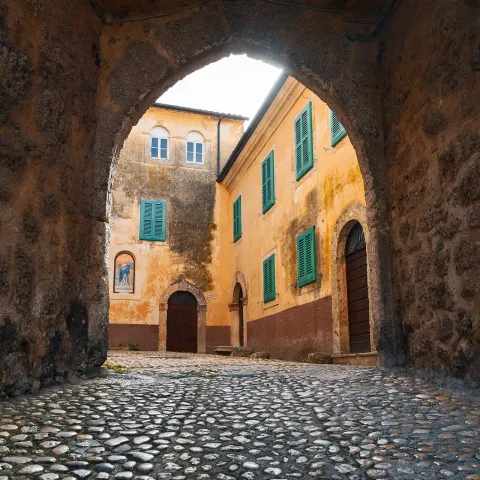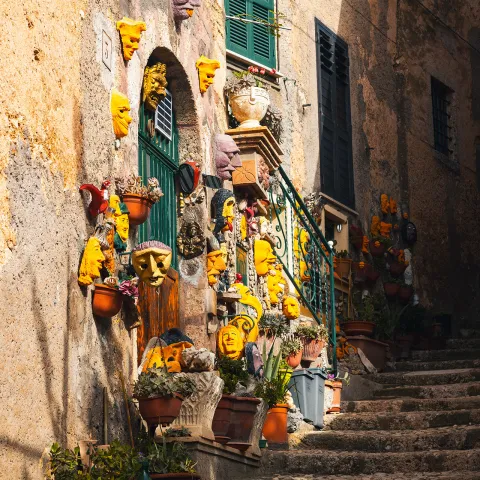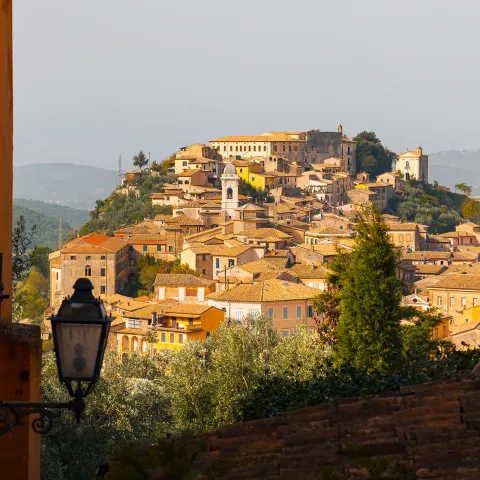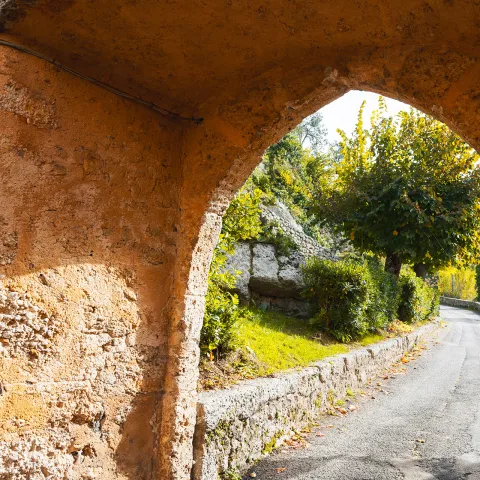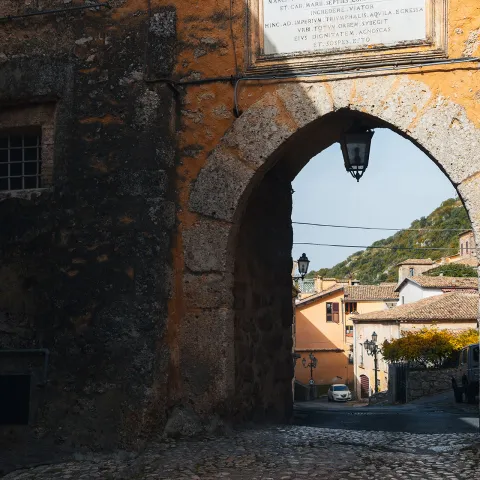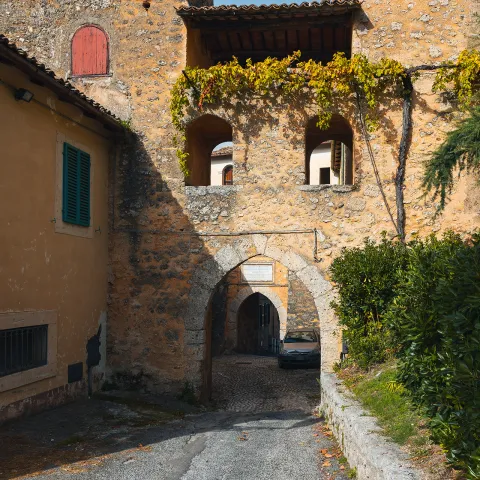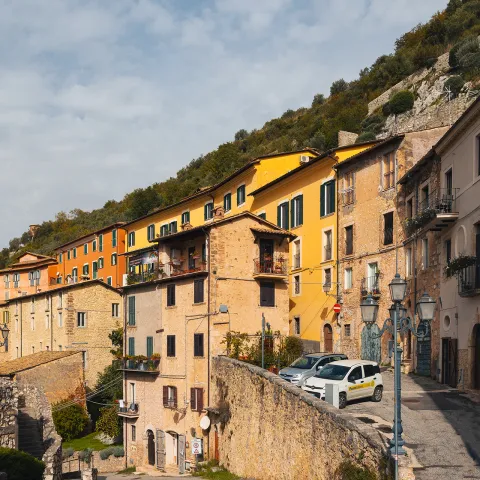Quartiere Colle and Porta Saturno
From Piazza Municipio, a walk along the charming Via Pio Spaccamela leads to the Colle neighbourhood
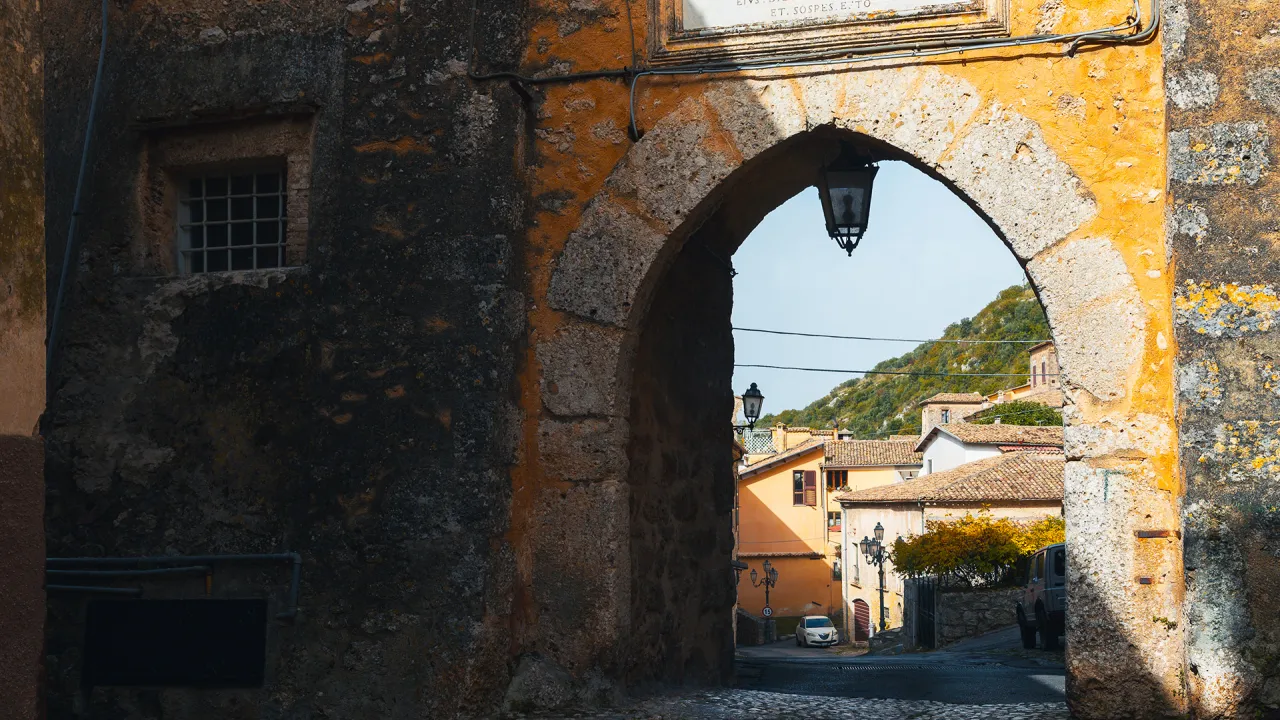
The street is lined with numerous buildings dating back to the 16th and 17th centuries, including Palazzo Ruggieri, which features an inscription from 1458 on the architrave of its stone portal; Palazzo Cardelli, known for its distinctive keeled grilles on the windows; the Church of the Madonna della Pietà (16th century), which houses a statue of Our Lady of Sorrows carved by Austrian sculptor Michele Stolz in the 18th century; and the Church of San Rocco, notable for its mullioned windows from the second half of the 18th century.
At the end of Via Spaccamela lies the Colle neighbourhood, where one can see an old public washhouse and the Capo di Bove fountain, which is embedded in the 17th-century wall of the cloistered Benedictine Monastery of Sant’Andrea. A little farther along is Piazza di Sant’Andrea, paved with typical cobblestones and familiarly known as la chiastra because, until the 15th century, it served as the cloister of the monastery (12th–13th century). From here begins Via Saturno, which crosses the entire neighbourhood, intersected by narrow alleys and streets and ultimately leads to the medieval Porta di Saturno. This architectural complex consists of two ogival openings: a gate and an outer door.
On the outer door, a Latin inscription commemorates the splendor of the city and its most illustrious sons, Caius Marius and Cicero. On the outside of the gate is one of the pages of the so-called “Stone Book”.
PHOTO GALLERY

VIDEO


